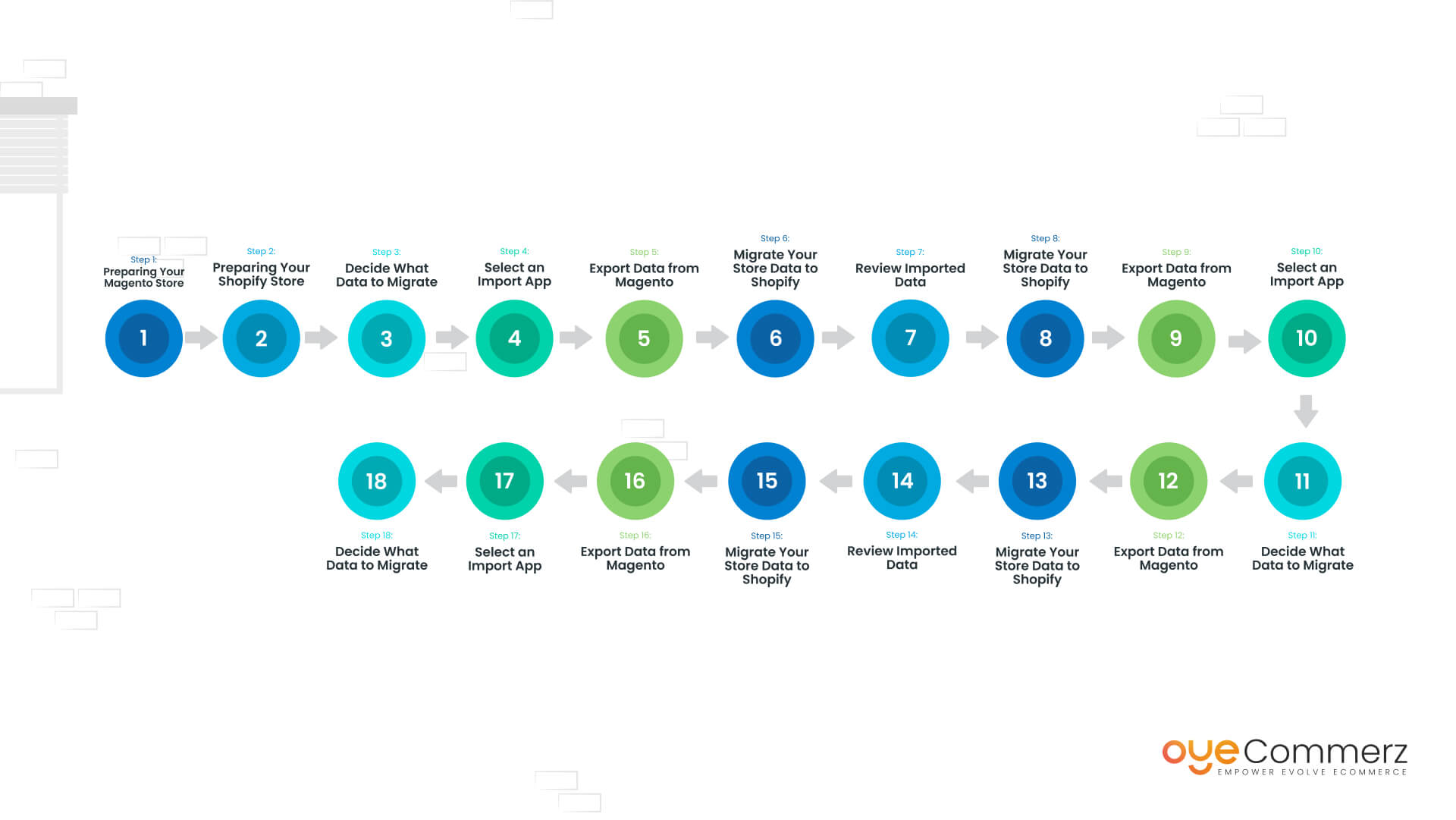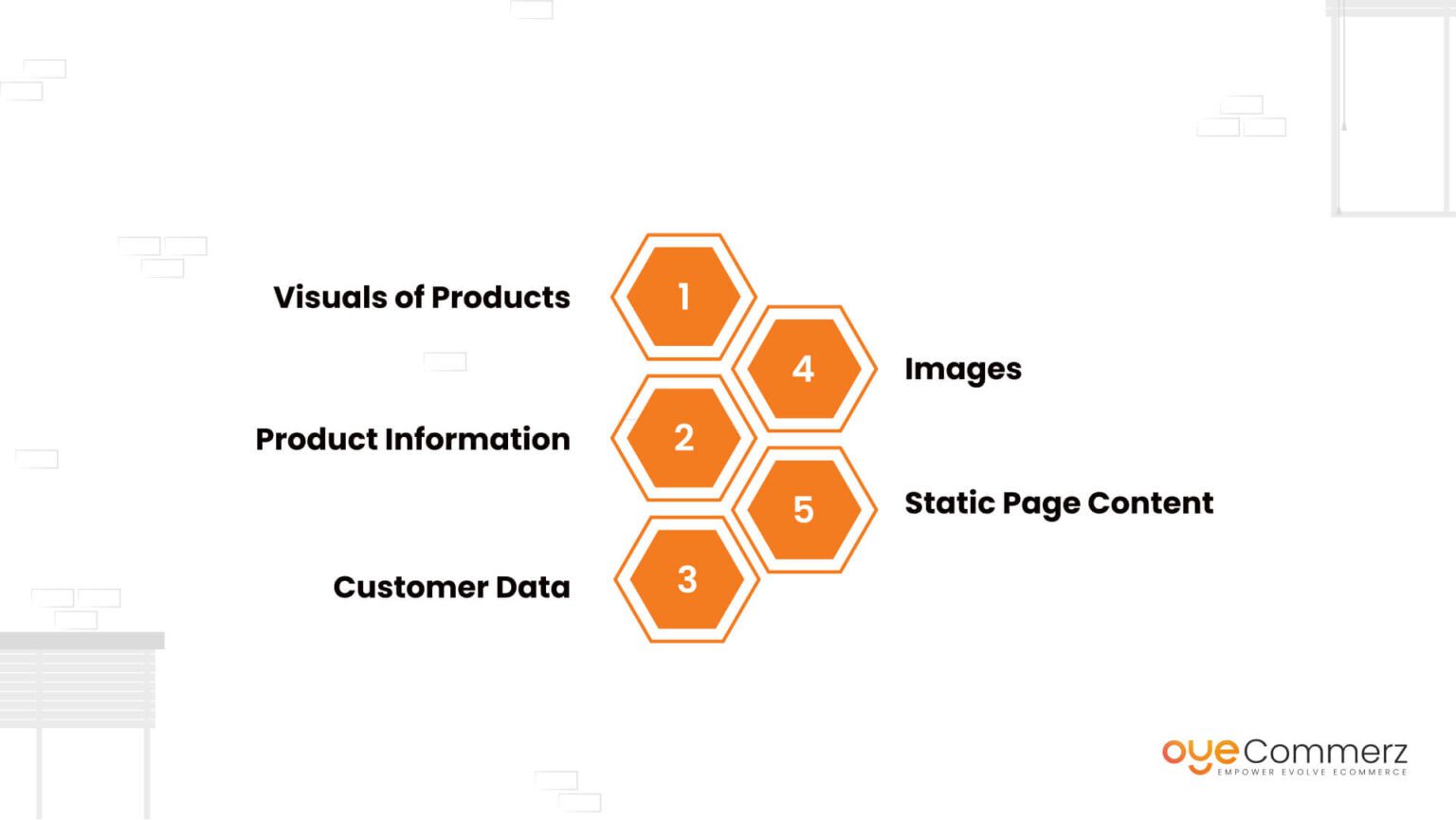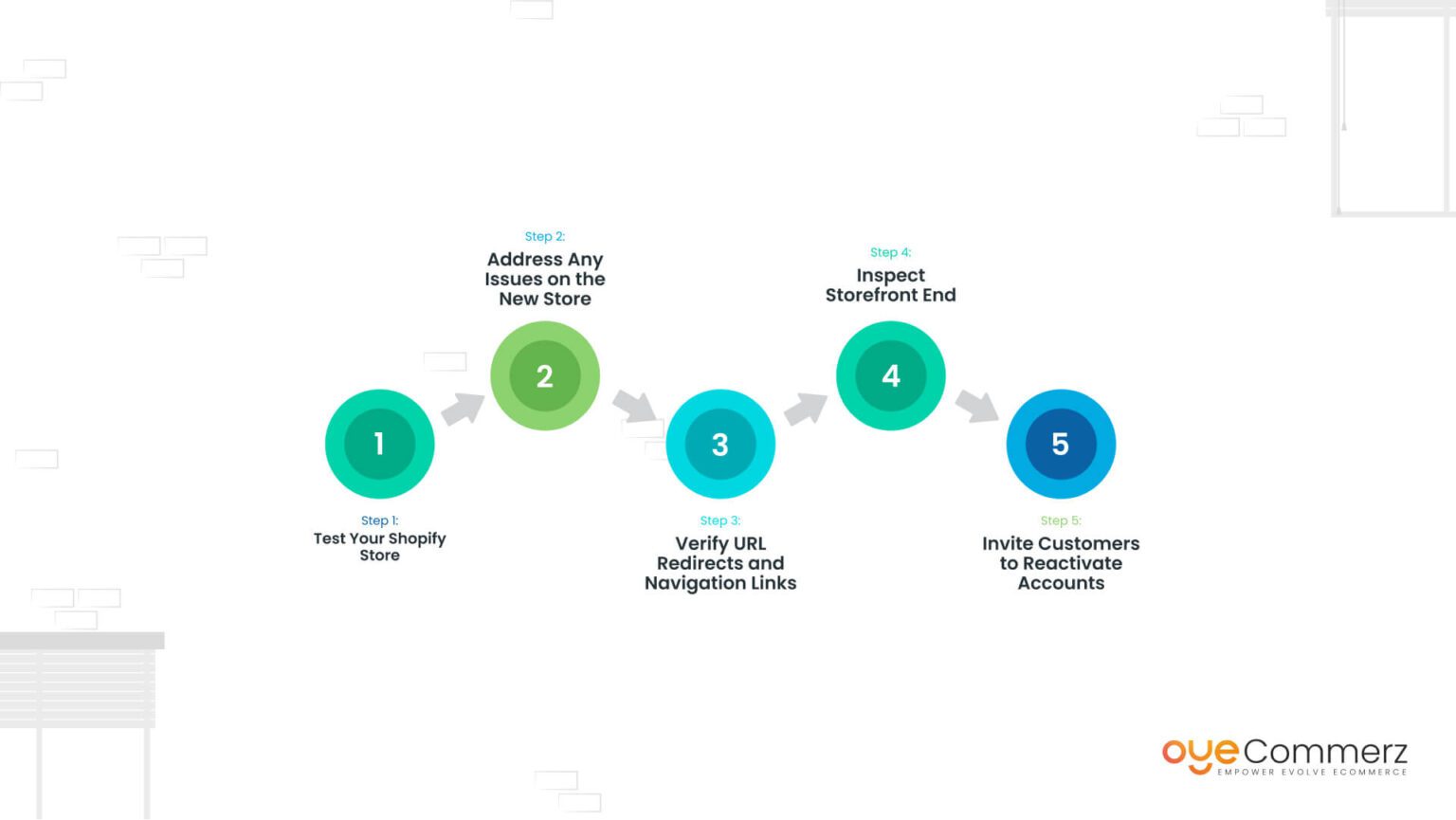Migrating your online store from Magento to Shopify can be beneficial for your business. If you’re feeling overwhelmed by the thought of switching platforms, don’t worry this guide is here to simplify the process. Shopify offers a user-friendly interface and powerful features that can help you manage your store more efficiently and effectively. In this blog, we’ll walk you through each step of the migration, from preparing your data to customizing your new Shopify store. Whether you’re a eCommerce pro or just starting out, our straightforward approach will make this transition smooth and stress-free. Let’s dive in and discover how to unlock the full potential of your online business with Shopify!
Table of Contents
ToggleKey Factors in Magento to Shopify Migration
- Preserving SEO Integrity with 301 Redirects:
When transitioning from Magento to Shopify, safeguarding your SEO performance and ensuring a smooth user experience is paramount. Explore the intricacies of 301 redirect mapping to keep your SEO intact.
- Transferring Images for SEO Success and Enhanced User Engagement:
Images play a pivotal role in maintaining SEO rankings and driving conversions. Learn how to migrate images effectively and optimize them for Shopify while maintaining SEO integrity.
- Reviving Old Content to Boost Organic Search Rankings:
Your existing content, including blogs and social posts, can be a valuable asset for maintaining SEO rankings. Discover how to update and manage old content on Shopify to ensure it remains relevant and impactful.
- Streamlining Third-Party Integrations for Shopify Success:
While your previous third-party integrations may not seamlessly transition to Shopify, learn how to evaluate and select the right apps from the Shopify App Store to automate and streamline your operations effectively.
Step-by-Step Guide: Migrating from Magento to Shopify

Step 1: Preparing Your Magento Store
Take a Backup of Your Magento Store:
- Use the Magento backend to create a complete backup of your data.
- You can opt for a System Backup, Database and Media Backup, or Database Backup. Ensure you have the latest data backed up for migration.
Analyze Magento Data:
- Perform a thorough audit of your Magento inventory.
- Review critical data, including Product Names, Product Details, Customer Information, and more to determine what needs to be migrated.
Step 2: Preparing Your Shopify Store
Create a Shopify Account:
- Select an appropriate Shopify plan for your business.
- Set up vital store elements such as About Us and Policies.
- Configure your URL redirects and choose between HTTP and HTTPS protocols.
Choose and Customize a Theme:
- Select a Shopify theme that suits your business requirements.
- Customize the theme to align with Shopify’s Online Store 2.0 standards.
Integrate Necessary Apps:
- Explore the Shopify App Store for apps that match your previous third-party integrations.
- Install apps for added functionality and automation.
Step 3: Decide What Data to Migrate
Determine Data to Migrate:
- Decide which data to migrate from Magento to Shopify.
- Consider seeking assistance from a Technical Shopify Migration Partner to assist in data mapping.
Step 4: Select an Import App
Choose an Import App:
- Explore import apps available in the Shopify App Store, such as Cart2Cart or LitExtension.
- Alternatively, hire a Shopify agency experienced in migration to handle the process.
Step 5: Export Data from Magento
Export Data from Magento:
- Access the Magento admin and navigate to “System” > “Data Transfer” > “Export.”
- Select the Entity Type you wish to export, such as Products, Customers, or Customer Addresses.
- Export data in CSV or XML format, based on your chosen migration method.
Step 6: Migrate Your Store Data to Shopify
Initiate Data Import to Shopify:
- Access your Shopify admin and go to “Apps” > “Importer Store.”
- Select Magento as the source platform.
- Upload the Magento export files and initiate the import process.
Step 7: Review Imported Data
Review Imported Data:
- Thoroughly inspect the imported data in your Shopify store.
- Check for any discrepancies or errors that might have occurred during the migration process.
Address Data Issues:
- Manually correct data issues, if necessary. Make adjustments using the “View Items” feature in the import summary.
Step 8: Customize Your Shopify Store
Choose a Theme and Customize:
- Opt to keep the default theme or select a paid theme that aligns with your business needs.
- Customize the theme to match your brand and maintain compliance with Shopify’s standards.
Step 9: Domain Integration
Set Up Domain:
- If you don’t already have a domain, purchase one through Shopify or a third-party provider.
- Configure your domain settings, enable auto-renewal, set it as your primary domain, and ensure proper email forwarding.
Step 10: Configure Shipping
Set Up Shipping:
- Configure accurate shipping rates and methods to avoid overcharging or complications during order fulfillment.
- Create shipping zones and determine applicable rates.
Step 11: Set Up Taxes
Configure Taxes:
- Abide by tax regulations by setting up tax rates and rules according to your location and product categories.
Step 12: Set Up Payment Providers
Choose a Payment Provider:
- Select a payment provider from Shopify’s offerings or supported third-party options.
- Enable Shopify Payments or the chosen third-party provider to facilitate smooth payment processing.
Step 13: Test Checkout Process
Test Checkout Process:
- Complete test transactions to ensure payment processing and order fulfillment are working smoothly.
Step 14: Set Up Informational Pages
Create Informational Pages:
- Develop essential pages like Privacy Policy, About Us, and Terms & Conditions to establish trust with customers.
Step 15: Configure Integrations
Integrate Third-Party Sites and Services:
- Configure integrations with external services, APIs, and third-party platforms to streamline operations.
Step 16: Test SEO Settings
Optimize SEO Settings:
- Verify domain, URL, and metadata settings to maintain or improve SEO rankings on your new Shopify store.
Step 17: Implement Social Media Integration
Integrate Social Media:
- Connect your Shopify store with your social media channels and begin sharing content to enhance your online presence.
Step 18: Set Up Data and Reporting Rules
Define Data and Reporting Rules:
- Establish rules for data management and reporting to monitor the performance of your new Shopify store.
By following these steps, you can facilitate a smooth and successful migration from Magento to Shopify, ensuring your online store is ready to thrive on its new platform.
Key Data Elements for Seamless Magento to Shopify Migration:

When migrating from Magento to Shopify, you can migrate a wide range of essential business data to ensure a seamless transition. Here’s a list of the data that can be migrated:
- Visuals of Products:
Images and visual elements associated with products, including color variations, size options, and shapes.
- Product Information:
Detailed product data, including descriptions, manufacturing details, special pricing, URLs, meta descriptions, product variants, base images, product numbers, and other relevant product attributes.
- Customer Data:
Customer information, such as names, email addresses, phone numbers, locations, and other customer-related data.
- Images:
Product images, service page images, and other visual content associated with your online store.
- Static Page Content:
Content from static pages, including About Us, Contact Us, blogs, and other content management system (CMS) pages.
Migrating these essential data elements ensures that your new Shopify store retains the crucial information needed to maintain your business operations and provide a seamless experience to your customers.
Post-Migration Steps for Magento to Shopify Transition

Once the Magento to Shopify migration process is complete, there are crucial post-migration steps to ensure that your new store is fully operational and ready to serve your customers effectively. Here’s an elaborate explanation of these steps:
- Test Your Shopify Store:
- After migrating your data to Shopify, thorough testing is essential. Check all aspects of your new store to ensure that everything is functioning correctly. This includes product listings, navigation menus, checkout processes, and any integrated apps or extensions.
- Verify that all images and content have been properly transferred and are displaying as intended. Look for any missing or broken elements that may require attention.
- Address Any Issues on the New Store:
- During testing, if you encounter any issues, it’s essential to address them promptly. These issues could range from minor discrepancies in product information to more significant technical glitches.
- Make a list of all identified issues and prioritize them based on their impact on user experience and store functionality. Ensure that you have a plan to resolve each issue effectively.
- Verify URL Redirects and Navigation Links:
- URL redirects are crucial to maintaining SEO rankings and ensuring that your customers are directed to the right pages. Double-check that all URL redirects from your Magento store are functioning correctly on your Shopify store.
- Test navigation links to confirm that customers can easily find their way around your new store. Ensure that menu items, categories, and subpages are well-organized and accessible.
- Inspect Storefront End:
- Examine the storefront from the user’s perspective. Navigate through the website just as your customers would identify any usability issues or design inconsistencies.
- Pay attention to the layout, fonts, colors, and overall aesthetics to ensure that your brand image is consistent and appealing on the new platform.
- Invite Customers to Reactivate Accounts:
- Communication with your existing customers is crucial. Let them know about your transition to Shopify and invite them to reactivate their accounts on the new platform.
- Send newsletters or email notifications that inform customers about the migration, highlight the benefits of the new Shopify store, and encourage them to share their experiences.
- Provide a direct link or instructions on how they can easily reactivate their accounts, ensuring a seamless transition for loyal customers
By thoroughly testing your Shopify store, addressing any issues, ensuring proper URL redirects, and inviting customers to reactivate their accounts, you can complete the migration process and transition your business to Shopify with confidence. These post-migration steps are essential for a successful and smooth shift to your new e-commerce platform.
Transition to Shopify with OyeCommerz’s Magento to Shopify Migration Services. Our team provides a smooth changeover from Magento, enhancing your store’s efficiency and customer engagement. With OyeCommerz, gain access to Shopify’s robust features and intuitive interface. Choose us for a strategic migration that advances your business in the competitive e-commerce landscape.
Top Read:
WordPress to Shopify Migration – A Complete Guide
Squarespace to Shopify Migration: Your Comprehensive Step-by-Step Guide
Contact to Migrate your Site to Shopify Now
In conclusion, switching from Magento to Shopify is a wise decision that will help your online store in many ways. Even though the process of migrating may appear overwhelming, a smooth transfer may be guaranteed by meticulous preparation, execution, post-migration testing, and customer involvement. Your online store will have a nice environment thanks to Shopify’s rich ecosystem, customizable features, and user-friendly interface. You may set up your company on the Shopify platform for growth and success by protecting important data, upholding SEO integrity, and emphasizing user experience. Taking advantage of your new Shopify store’s full potential and the ongoing assistance it provides can result in higher customer happiness, more sales, and a flourishing online presence.



